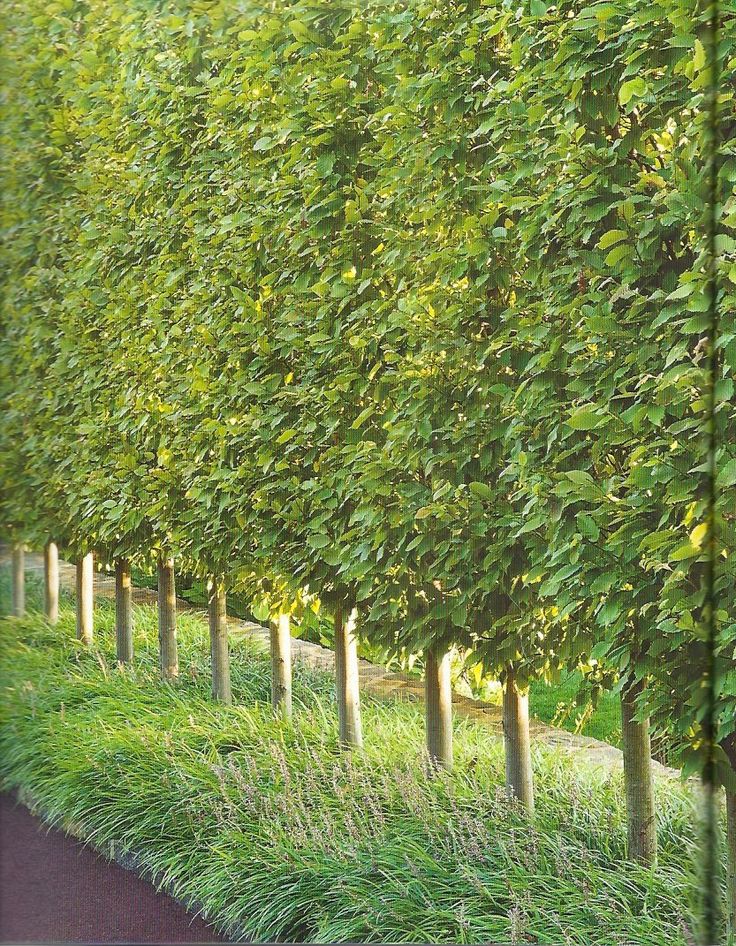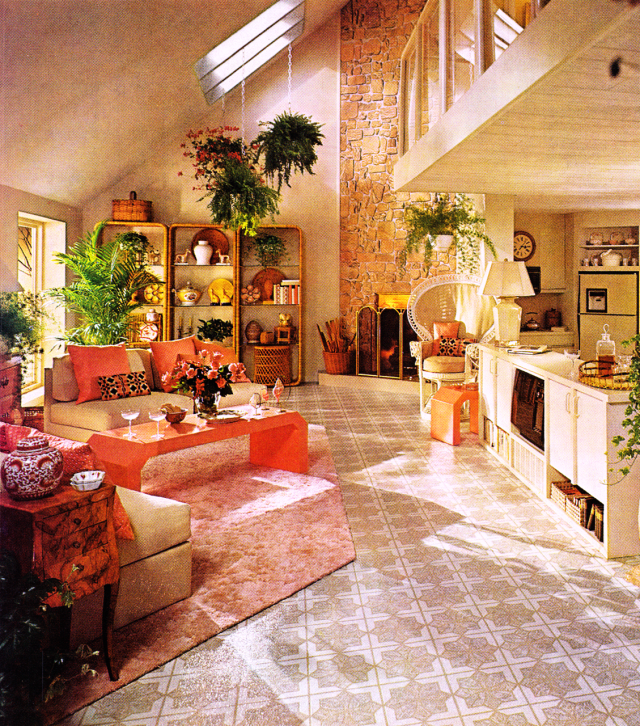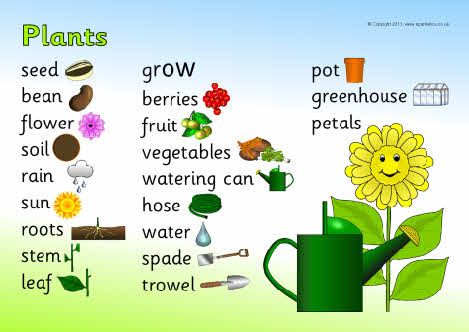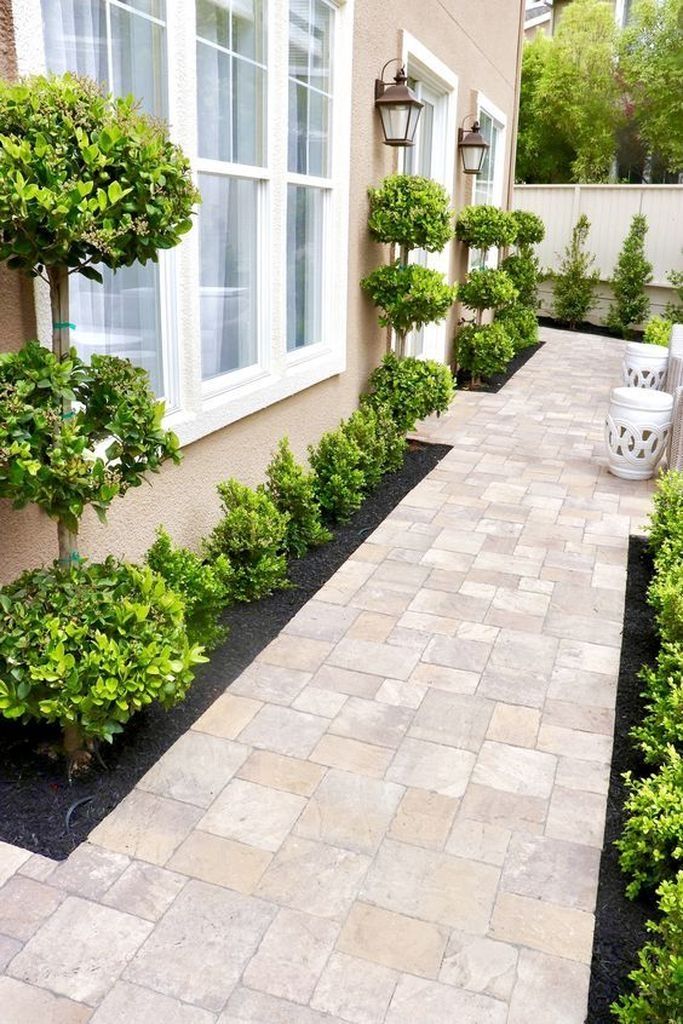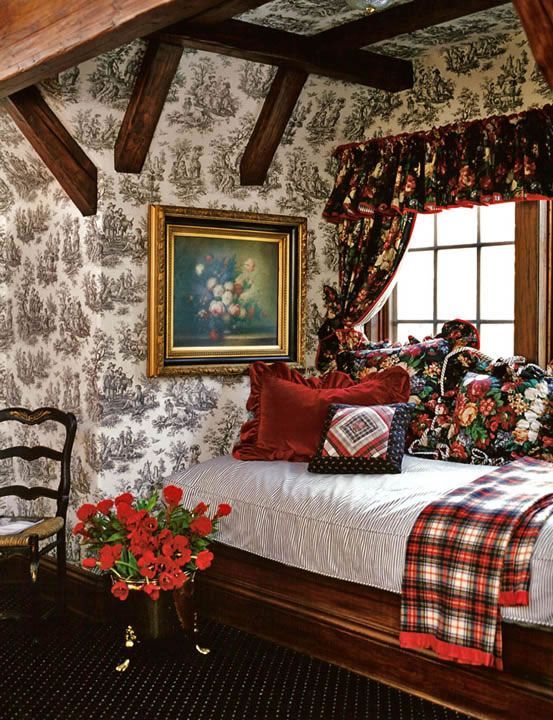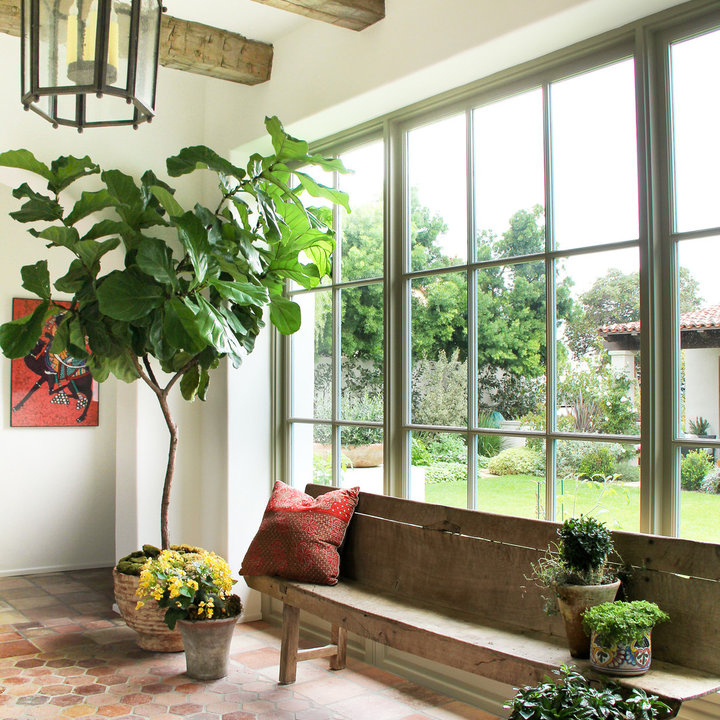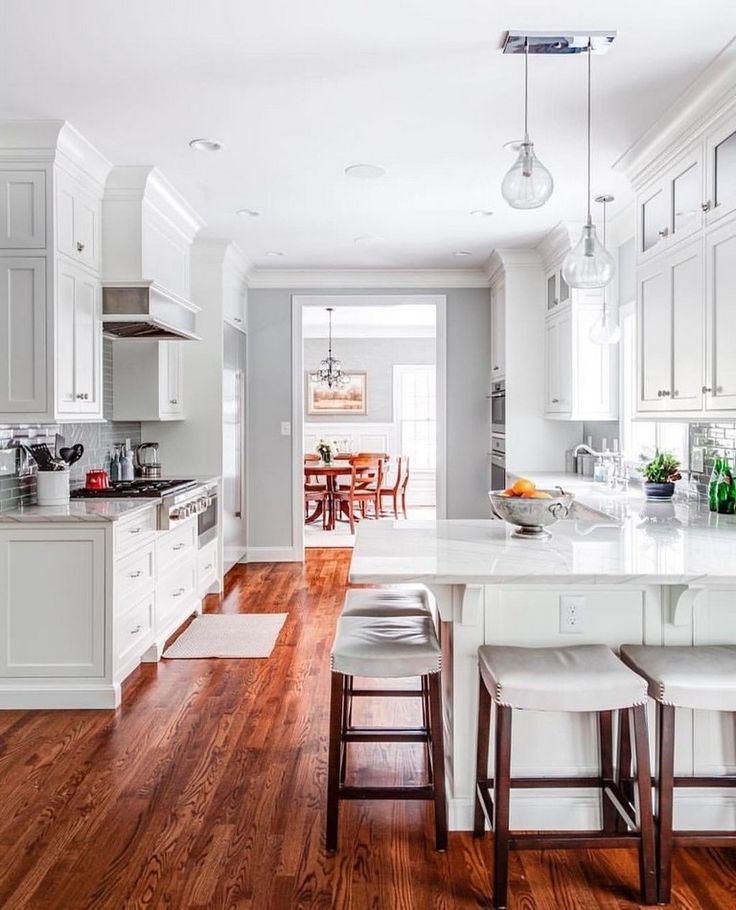Trees that screen for privacy
The Best Trees for Privacy in Your Yard
Looking for trees that provide privacy from the wrong kind of neighborhood watch?
Planting a natural privacy fence is a sustainable, eco-friendly alternative to a hardscaped privacy fence, and that’s not the only positive, according to Alex Kantor of Perfect Plants Nursery:
“The benefits of using trees for privacy are endless. They have low-maintenance qualities, help seclude you from nosy neighbors, provide lush green landscape year-round (especially if they are evergreen), shield your property from wind and noise, create shade and offer beautiful scenery to view.”
Alex Kantor | Perfect Plants
There are a lot of options and factors to keep in mind when planning to build a tree fence. “While traditional fences can be installed almost anywhere, a ‘green fence’ needs sunlight and water to thrive,” says Missy Henriksen of the National Association of Landscape Professionals.
Find the right trees to block your neighbors with this full breakdown of the most popular privacy tree options.
Top 10 Trees for a Natural Privacy Fence
1. Eastern Redcedar
For a large, rugged privacy tree that provides full coverage, the Eastern Redcedar is the conifer for you. “Evergreen plants like broadleafs or conifers are generally a good choice for year-round effectiveness,” according to Henriksen, making this durable juniper a great tree fence option. Its red, aromatic wood and thick foliage will give your backyard an earthy fragrance and attract local birds and other wildlife.
What You Need to Know
- Height Range: 40-60 feet
- Width Range: 10-20 feet
- Sunlight Guidelines: Full to partial (4 to 8 hours of direct sun per day)
- Planting Guidelines: Eastern Redcedars can reach 60 feet high and 20 feet wide at maturity, so they’re best suited for larger backyards.
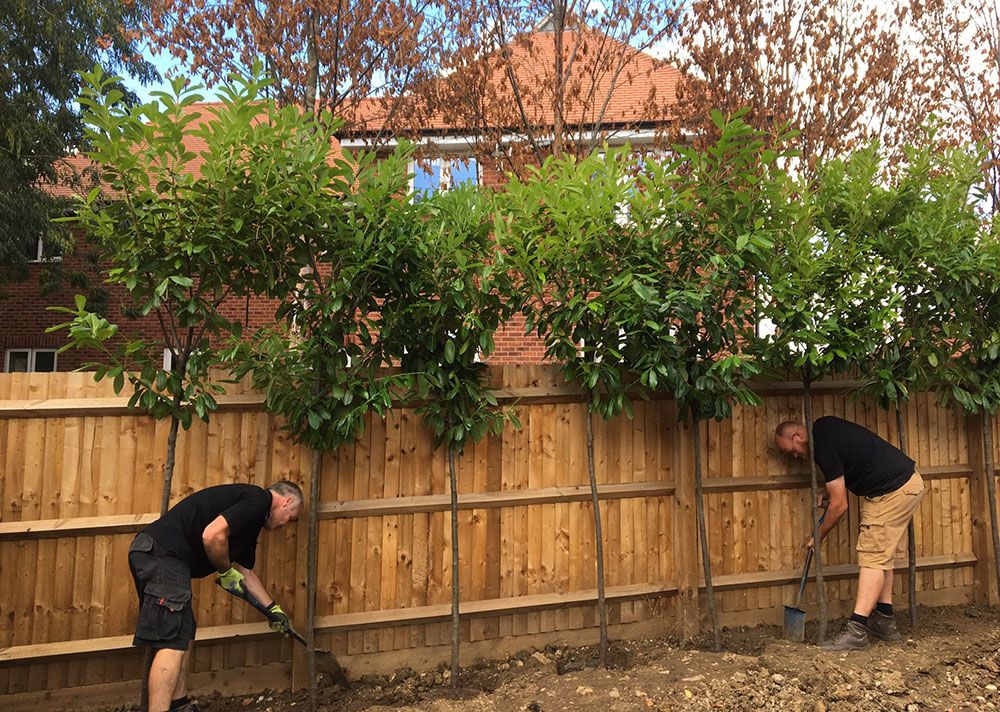 If you have the space, make sure to plant these about 20 feet apart and away from power lines or neighboring homes.
If you have the space, make sure to plant these about 20 feet apart and away from power lines or neighboring homes. - Preferred Climate: 3-9 outdoor growing zone, hardy down to -30℉. This fast-growing privacy tree is one of the hardiest and most tolerant options available, thriving in cold, hot, dry and wet areas across the country.
- Garden Styles Suited For: Natural or rustic
2. Hybrid Willow Tree
The Hybrid Willow has a growth rate of 6 to 10 feet per year, and this disease-resistant plant typically reaches its mature height in just five years. They were bred to quickly form a thick wall that blocks out neighbors and noise. These privacy trees grow well even in cold environments, and their dense foliage makes them great windbreak trees. They’re also great for drying out swampy soil.
What You Need to Know
- Height Range: 35-45 feet in rows, 75 feet alone
- Width Range: 20 feet
- Sunlight Guidelines: Full to partial (3 to 6+ hours of direct sun per day)
- Planting Guidelines: Hybrid Willows require a lot of water but can withstand periods of drought with the right maintenance.
 These plants do best in mid-sized to large yards. If spaced incorrectly, they can reach a towering 75 feet in height, so to create a manageable Hybrid Willow tree fence, be sure to plant them about 5 feet apart.
These plants do best in mid-sized to large yards. If spaced incorrectly, they can reach a towering 75 feet in height, so to create a manageable Hybrid Willow tree fence, be sure to plant them about 5 feet apart. - Preferred Climate: 4-9 outdoor growing zone, hardy down to -20℉. Considered to be the fastest-growing privacy tree, it’s tolerant of a variety of growing conditions and can fill common trouble spots in the yard.
- Garden Styles Suited For: Traditional, contemporary or Zen
3. Leyland Cypress
One of the most popular trees for privacy, the Leyland Cypress is a beautiful, fast-growing evergreen that is great for solid, full coverage in large backyards. They have been known to reach heights of 50 feet in just 15 years. When planted in a row, they create an impenetrable mass of branches that make them great trees for screening wind, snow and even noise.
What You Need to Know
- Height Range: 40-60 feet in rows, 70 feet alone
- Width Range: 15-20 feet in rows, 30 feet alone
- Sunlight Guidelines: Full (6+ hours of direct sun per day)
- Planting Guidelines: The Leyland Cypress can handle droughts, pests and even air pollution, and their high tolerance to salt makes them good privacy trees in coastal areas.
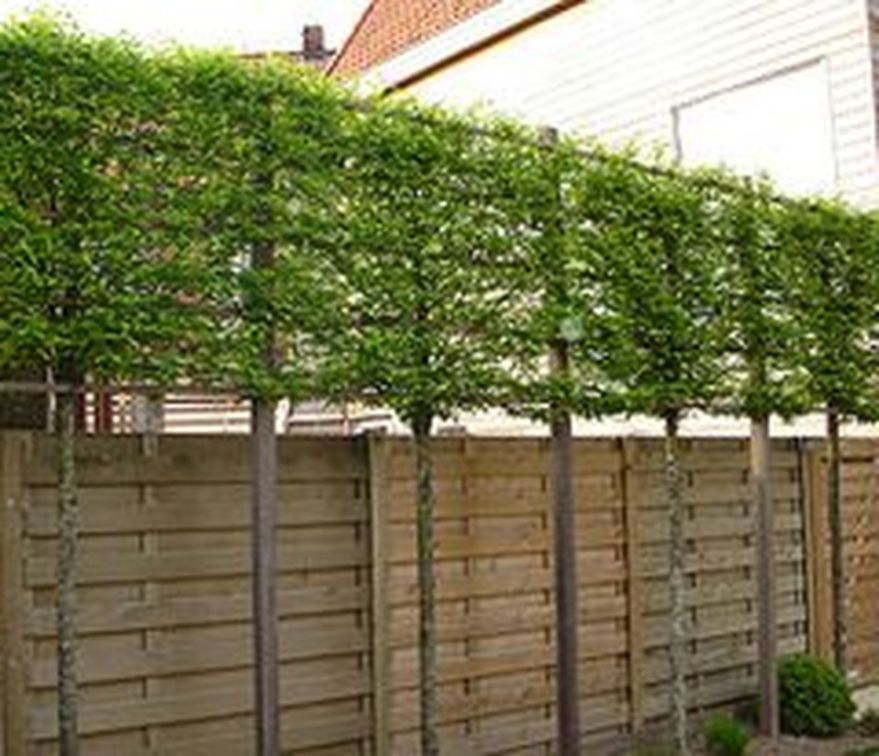
- Preferred Climate: 6-10 outdoor growing zone, hardy down to 0℉. These are one of the fastest-growing evergreen trees and great for defining property lines as a natural privacy fence, but due to their shallow root system, these trees are not well-adapted to hot summers and are susceptible to root rot. They do best in large, well-drained yards with mild to moderate temperature highs.
- Garden Styles Suited For: Mediterranean or traditional
4. Spartan Juniper
If your yard can’t accommodate some of the larger privacy fence trees, the Spartan Juniper is a great option for mid-sized backyards. Planted in a row, Spartan Junipers provide a stately, uniform look to any backyard, and their compact foliage makes them effective windbreak trees.
What You Need to Know
- Height Range: 15 feet
- Width Range: 3-5 feet
- Sunlight Guidelines: Full (6+ hours of direct sun per day)
- Planting Guidelines: Spartan Junipers prefer dryer soil and lots of sunlight.
 To prevent root rot and other ailments, make sure not to overwater them and plant them about 5 feet apart. These trees don’t do well with heavy pruning, so be sure to plant them in spaces they will fit naturally at their full size.
To prevent root rot and other ailments, make sure not to overwater them and plant them about 5 feet apart. These trees don’t do well with heavy pruning, so be sure to plant them in spaces they will fit naturally at their full size. - Preferred Climate: 5-9 outdoor growing zone, hardy down to -10℉. These are water-efficient trees which can be watered by natural rainfall after the first year of planting, though if there is a drought you should water them 1 inch per week. The Spartan Juniper can handle hot or cold temperatures and keeps its dark green color all year.
- Garden Styles Suited For: Contemporary, Mediterranean or Zen
5. Sky Pencil Holly
Looking for trees that provide privacy while taking up very little space? The Sky Pencil Holly is the right plant for you. With a mature height between 8 to 10 feet tall and a width of just 2 feet, Sky Pencil Hollies act as the ultimate space-saving privacy fence trees while still providing solid protection from wind, noise and wandering eyes.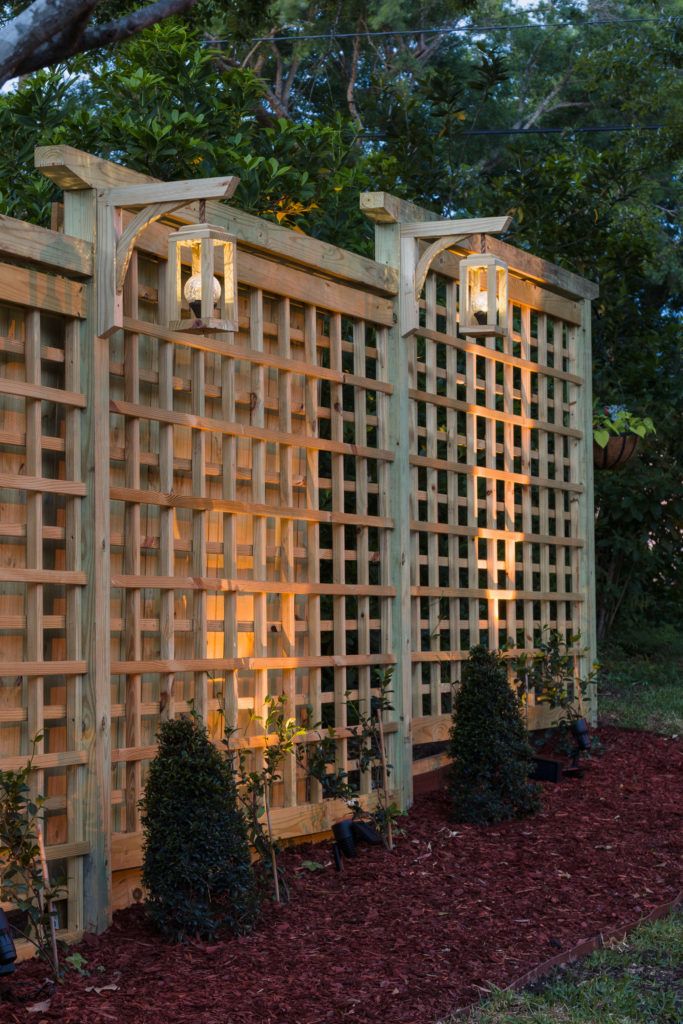
What You Need to Know
- Height Range: 8-10 feet
- Width Range: 2 feet
- Sunlight Guidelines: Full to partial (3 to 6+ hours of direct sun per day)
- Planting Guidelines: Sky Pencil Hollies are able to thrive both in the ground and in decorative containers. Unlike their thorny cousin, the Holly Bush, their foliage is soft to the touch, making them the perfect trees for privacy on patios, urban decks and small backyards.
- Preferred Climate: 5-9 outdoor growing zone, hardy down to -10℉. These privacy trees prefer light, moist soils but are adaptable to different climates. Like many evergreens, these plants can develop root rot if overwatered, so be sure to give them a well-drained environment.
- Garden Styles Suited For: Contemporary or Zen
Working on a backyard makeover?
Find the best way to get rid of dirt, rocks and yard waste from your landscaping project.
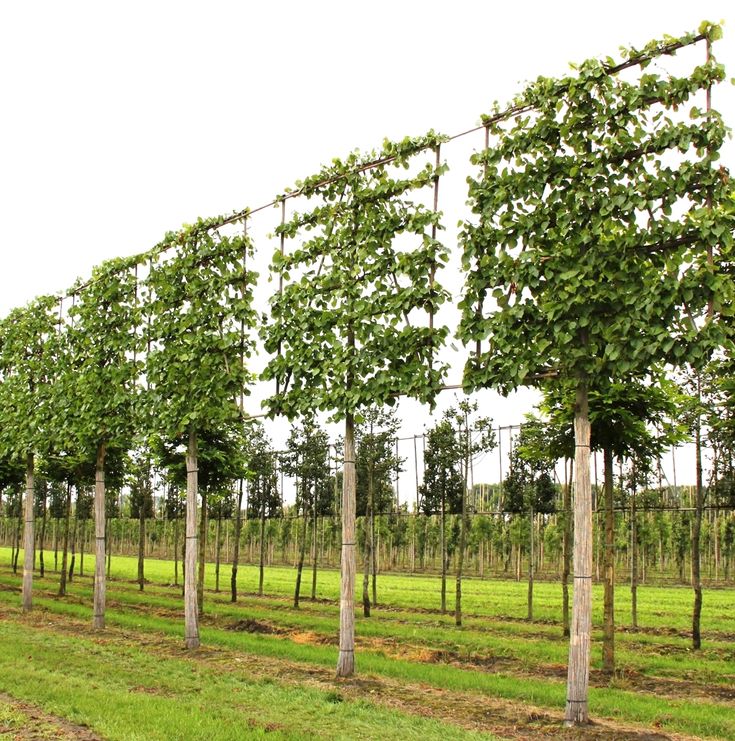
6. Green Giant Thuja (Arborvitae)
The Green Giant Thuja is widely considered one of the best trees for privacy, making it a fan favorite in many backyards. “Thujas are one of our most popular trees,” says Kantor. “They are extremely fast-growing, provide privacy quickly and are also cold hardy. They can survive in a multitude of climates and are not affected by many pests or diseases.”
Their uniform, cone-like shape and consistent annual growth rate of 3 to 5 feet make for a polished tree privacy fence that requires very little pruning to maintain. You can trim the tops regularly for a classic, French Renaissance feel or leave them alone for a more natural look.
What You Need to Know
- Height Range: 30-40 feet
- Width Range: 5-8 feet in rows
- Sunlight Guidelines: Full to partial (3 to 6+ hours of direct sun per day)
- Planting Guidelines: If you like the height and density of the Leyland Cypress but don’t have the conditions to maintain it, the Green Giant is a great alternative.
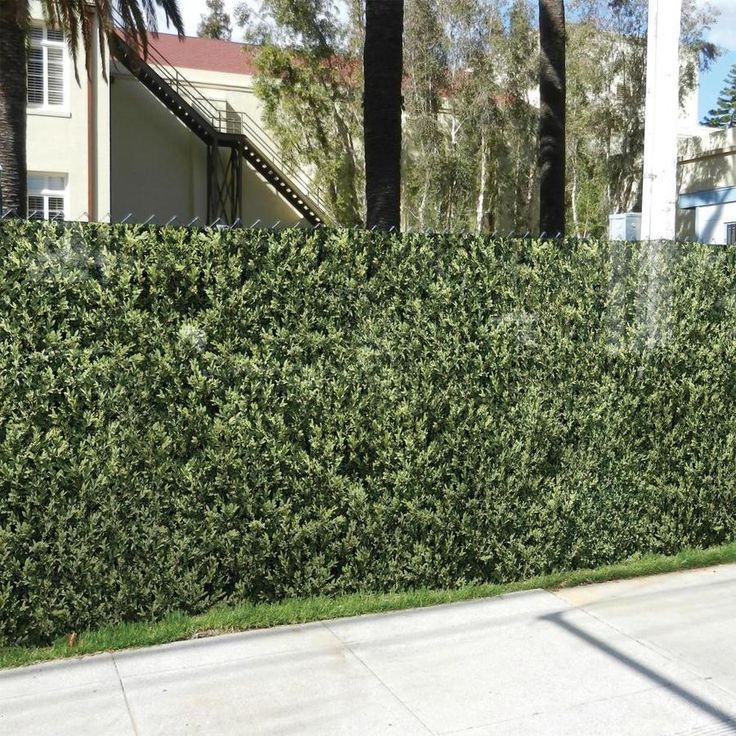 Just be sure to have a defense against deer on hand, as their soft leaves and branches are irresistible to these native grazers.
Just be sure to have a defense against deer on hand, as their soft leaves and branches are irresistible to these native grazers. - Preferred Climate: 5-9 outdoor growing zone, hardy down to -10℉. These durable, fast-growing trees are tolerant to heat and humidity, as well as drought and different types of soil. However, the planting site must have proper drainage.
- Garden Styles Suited For: Contemporary, traditional or rustic
7. Emerald Green Thuja (Arborvitae)
With a mature height of just 12 to 14 feet, the Emerald Green Thuja offers the classic beauty of its giant cousin at half the size. Their controlled growth rate of just 6 to 9 inches per year makes them a great choice for landscaping areas that are limited on space.
What You Need to Know
- Height Range: 12-14 feet
- Width Range: 3-4 feet in rows
- Sunlight Guidelines: Full to partial (3 to 6+ hours of direct sun per day)
- Planting Guidelines: These beauties are a great choice for mid-sized yards, and their slender shape makes them ideal as foundation plants along the home – just be sure to give them enough room to grow vertically.
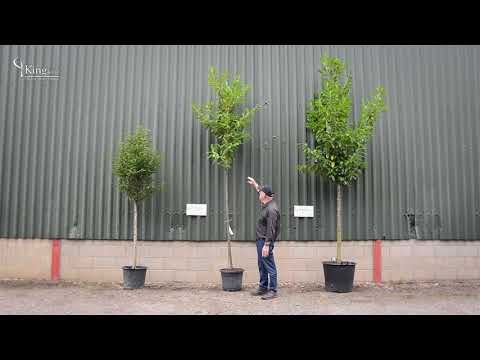 When planting these trees for privacy or wind blockage, it’s best to space them about 2 feet apart for optimal coverage.
When planting these trees for privacy or wind blockage, it’s best to space them about 2 feet apart for optimal coverage. - Preferred Climate: 3-8 outdoor growing zone, hardy down to -30℉. These privacy trees are very adaptable, resistant to snow and ice, drought-tolerant and will thrive in most climates.
- Garden Styles Suited For: Contemporary, Mediterranean, Zen or rustic
8. Flowering Dogwood
Flowering Dogwoods are great privacy trees for those looking for seasonal coverage with a pop of color. Dogwoods come in a variety of colors including white, pink and red, and their ornamental berries will make your backyard popular with local robins, cardinals and blue jays.
What You Need to Know
- Height Range: 15-25 feet
- Width Range: 15-25 feet
- Sunlight Guidelines: Full to partial (3 to 6+ hours of direct sun per day)
- Planting Guidelines: Dogwoods do best in large to mid-sized backyards.
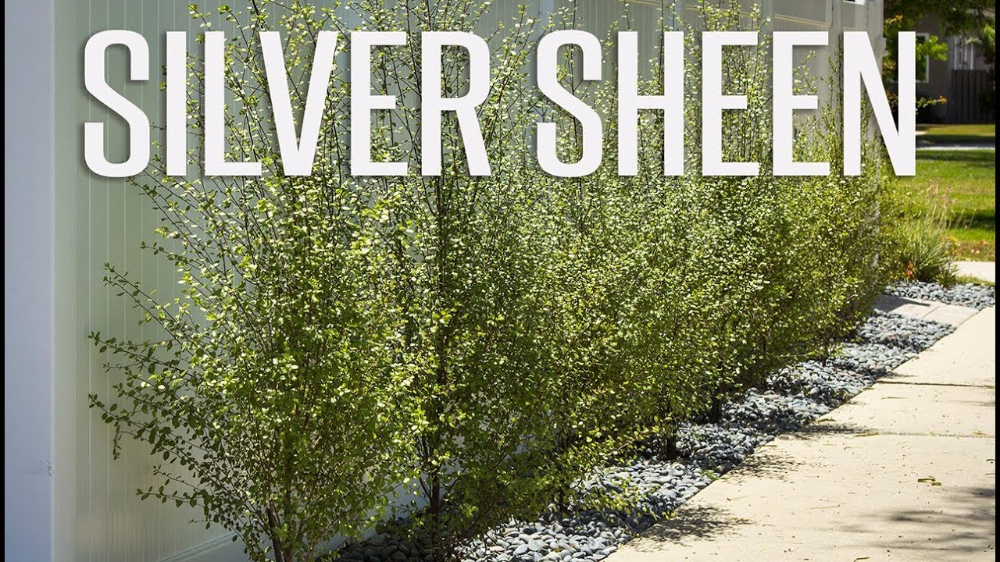 Their beautiful, compact blooms are great for vertically extending an existing privacy fence when planted 20 feet apart. They can also be strategically placed for spot coverage – for instance, blocking your neighbor’s favorite view of your lawn chairs.
Their beautiful, compact blooms are great for vertically extending an existing privacy fence when planted 20 feet apart. They can also be strategically placed for spot coverage – for instance, blocking your neighbor’s favorite view of your lawn chairs. - Preferred Climate: 5-8 outdoor growing zone, hardy down to -10℉. These trees prefer well-drained soil that is not too dry and can thrive year-round in both hot and cold climates.
- Garden Styles Suited For: Traditional or rustic
9. Weeping Podocarpus
These fast-growing, woody evergreens are a popular privacy tree choice in places like Florida and California. Weeping Podocarpus trees have plush, billowing foliage and work well as spot privacy trees or in a full natural privacy fence.
What You Need to Know
- Height Range: 35-45 feet
- Width Range: 10-20 feet
- Sunlight Guidelines: Full to partial (3 to 6+ hours of direct sun per day)
- Planting Guidelines: These plants will do best on large properties and should be planted 10 to 15 feet away from homes and other buildings.
 When planting in a row, allow about 5 to 10 feet of space between each tree.
When planting in a row, allow about 5 to 10 feet of space between each tree. - Preferred Climate: 9-11 outdoor growing zone, hardy down to 20℉. This tree’s drought tolerance, preference for dry soil and ability to thrive in mildly salty conditions make it an ideal choice for southern and coastal areas.
- Garden Styles Suited For: Tropical, contemporary or rustic
10. Goldspire Ginkgo
For privacy trees that are as beautiful as they are functional, try lining your yard with Goldspire Ginkgo. These unique trees take on a narrow, pyramidal shape with their deep green summertime leaves giving way to stunning golden hues each fall.
What You Need to Know
- Height Range: 14-16 feet
- Width Range: 5-6 feet
- Sunlight Guidelines: Full to partial (3 to 6+ hours of direct sun per day)
- Planting Guidelines: The Goldspire Ginkgo is a durable, smog-resistant tree that will do well in mid-sized backyards.
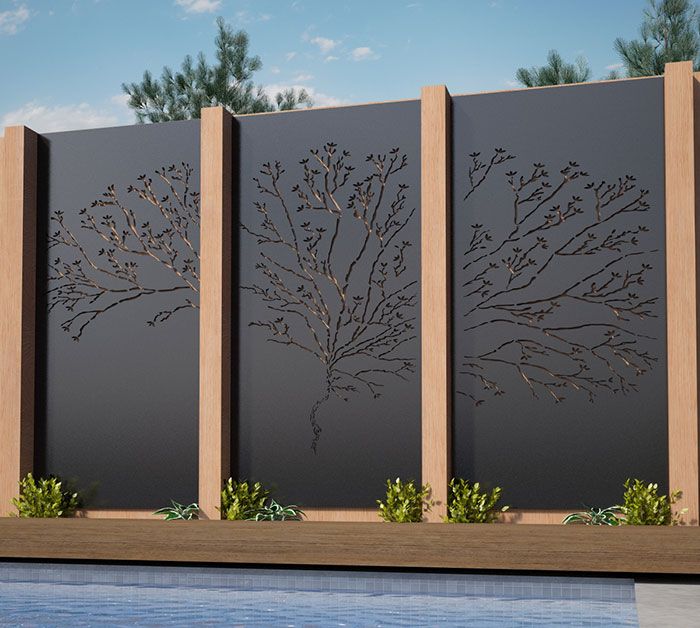 Just be careful not to confuse it for its cousin, the Ginkgo. Ginkgo trees can reach sizes of 40 to 60 feet, and their berries smell awful. Goldspire Ginkgos are specifically bred for their smaller, slender shapes and lack the pungent fruit of their cousins.
Just be careful not to confuse it for its cousin, the Ginkgo. Ginkgo trees can reach sizes of 40 to 60 feet, and their berries smell awful. Goldspire Ginkgos are specifically bred for their smaller, slender shapes and lack the pungent fruit of their cousins. - Preferred Climate: 4-9 outdoor growing zone, hardy down to -20℉. This versatile, low-maintenance privacy tree thrives in a wide variety of climates. Natural rainfall should supply its water needs after the first year of planting, though the soil must have proper drainage.
- Garden Styles Suited For: Zen or traditional
What are the Best Privacy Trees for Your Backyard?
“When selecting plants for a fence, it’s important to take into consideration the specific region of the country where you live,” says Henriksen. If you’re ever unsure about a tree’s fit, just ask a nearby landscape expert. They have extensive knowledge of trees that provide privacy and that will also thrive in your local climate.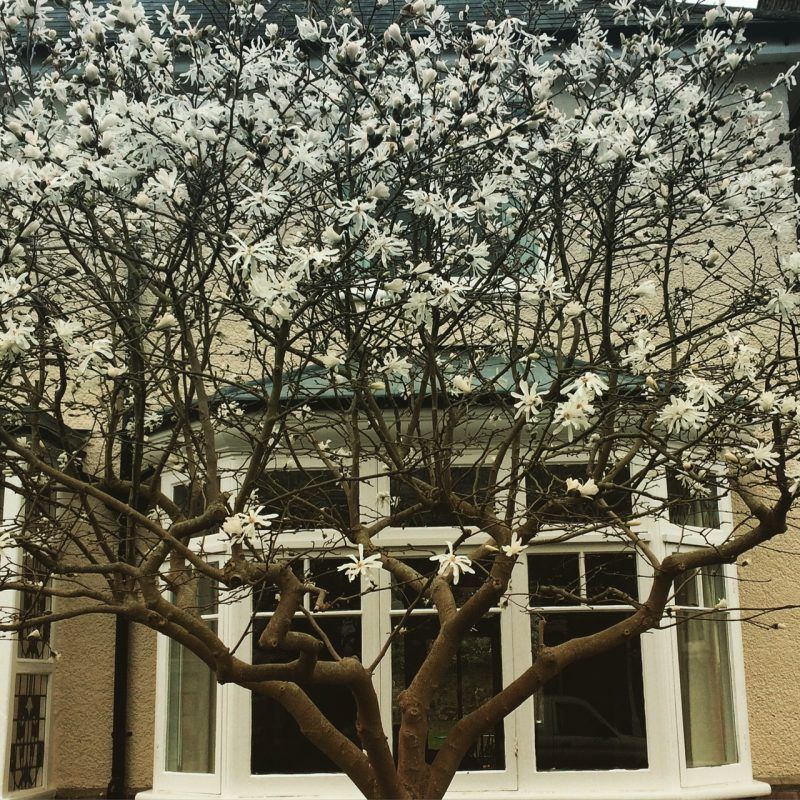
Take measurements and have a few pictures of your backyard on hand so they have some idea of the space you’re working with. And always remember that good tree fences make good neighbors.
Going for a whole new look outdoors? Check out these articles for more landscaping makeover tips:
- How to Redo a Flower Bed
- 10 Budget-Friendly Backyard Landscaping Ideas
- How to Add Curb Appeal to Your Home
Best trees for privacy – 15 ideas to screen your yard
(Image credit: Jon Lovette / Getty Images)
The best trees for privacy not only offer a beautiful, natural way to screen your yard, but also provide structure and interest year round.
Privacy trees give such a wonderful feeling of seclusion, and are one of the best backyard ideas for creating a lush backdrop for planting.
While fencing and walls are good for practicality and security, the best trees for screening offer a softer way to achieve this, and are perfect for pairing with more solid boundaries.
Trees offer more dappled coverage and, where a canopy starts at a higher level, can allow you to see through at a lower height. This means they can be used to retain an attractive view or be grown next to boundaries – so consider trees alongside your garden wall ideas and garden fence ideas.
Also think about landscaping around trees to add character and interest to your yard.
Some of the best trees for privacy are also the best trees for shade, so decide where you want them positioned in relation to the house and how compatible that is with your outdoor dining ideas.
The best trees for privacy and screening in a backyard
There are no better garden screening ideas than natural ones. Namely: trees. Whether you are looking to stop neighbors being able to see into your garden or to screen out a nearby building, trees do the very best job, while providing color and garden shade.
Planting a mixed variety of trees for privacy and screening is also one of the best wildlife garden ideas for providing natural habitats and food for birds and wildlife.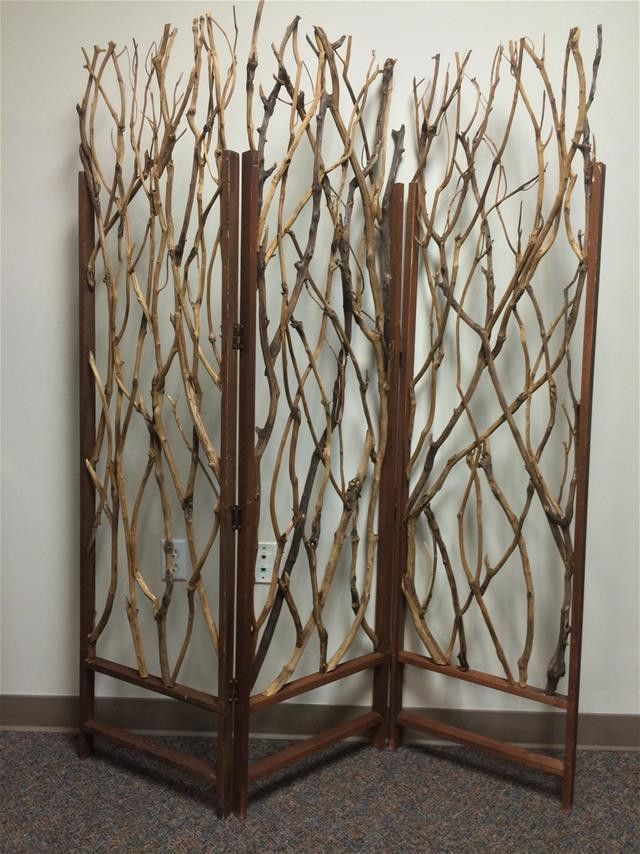
The best trees for privacy – and the best trees for screening – will generally have a bushy, evergreen canopy, making evergreen trees for gardens an ideal choice.
If space allows, however, consider planting a variety of screening trees, including some of the best trees for autumn color, or others bearing seasonal blossom or fruits, to add color and interest throughout the year.
Before you start planting trees for privacy and screening in a backyard, do your research. This includes checking:
- Your USDA hardiness zone, to make sure it is compatible with your location.
- The soil type, which must be suitable for your chosen tree – the best trees for clay soil won't thrive in chalky soil, for example.
- The maximum height the trees might grow to, and also check the spread of roots won't interfere with drainage or the foundations of buildings close by.
- Growth rate of the variety – if you need screening in place quickly, don't opt for a slow-growing specimen.
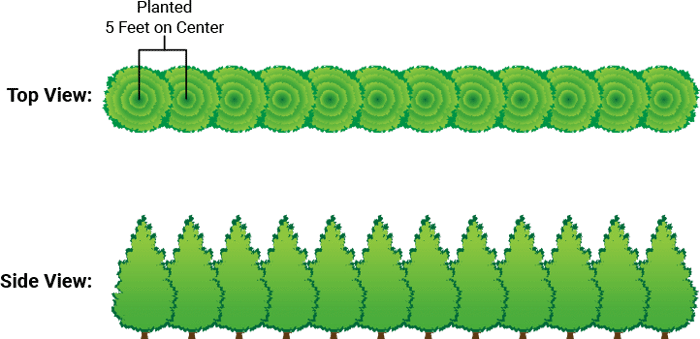
- If the trees for screening will need extra protection from the wind.
- The maintenance requirements for the chosen tree.
- Make sure you know how to plant a tree to give it the best possible start.
1. Crabapple (Malus)
(Image credit: Getty Images)
With their beautiful spring blossom and fall fruit, crabapples are some of the most ornamental trees for privacy, and are also beloved of wildlife.
Growing up to 39 feet over several decades, crab apples are medium-sized trees that work well in the town or country. ‘A distinctive crabapple with a rounded form and medium growth habit can be planted 15 to 20 feet from the house,’ says Dan Lambe from the Arbor Day Foundation , author of Now is the Time for Trees .
Dan is particularly fond of the Prairifire crabapple, which grows to a more compact 20 feet tall, making it one of the best trees for small gardens.
‘It’s a showy, disease-resistant tree that offers year-round beauty in the landscape,' he says.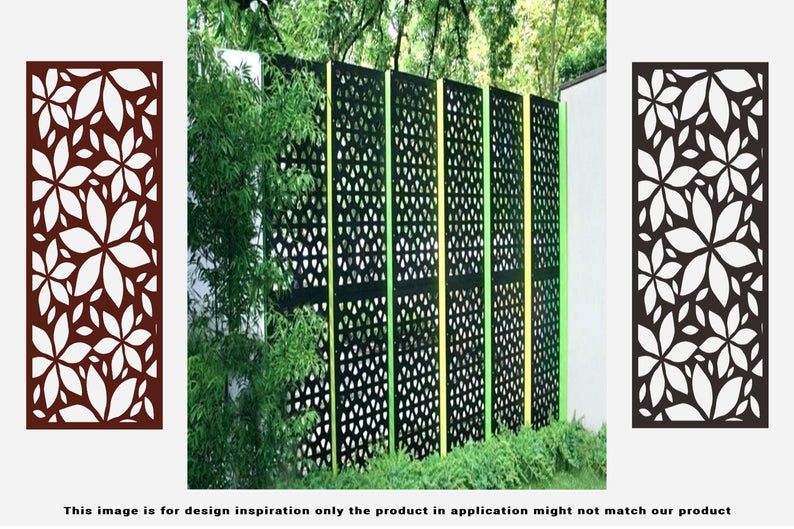 'Dark red buds open to reddish pink flowers in spring with glossy reddish maroon trees. Its foliage turns dark green in summer and a beautiful bronze color in fall, when small decorative purple fruits attract wildlife.’
'Dark red buds open to reddish pink flowers in spring with glossy reddish maroon trees. Its foliage turns dark green in summer and a beautiful bronze color in fall, when small decorative purple fruits attract wildlife.’
Grow it in USDA zones 3-8 in moist but well-draining soil, in full sun or partial shade.
2. Cotoneaster ‘Cornubia’
(Image credit: Getty Images)
While actually a large semi-evergreen shrub, Cotoneaster ‘Cornubia’ is usually grown as a medium-sized tree. It’s one of the best trees for privacy and screening if you’re looking for an ornamental variety, as it’s also one of the most striking trees with red berries.
‘Winter wouldn’t be winter without berries,’ says Claire Masset, author of Cottage Gardens .
‘The semi-evergreen Cotoneaster ‘Cornubia’ has elegant oval leaves and an attractive arching habit. Every winter during a particularly cold spell, my cotoneaster becomes a magnet for birds who come to feast on the berries – a cheering sight indeed.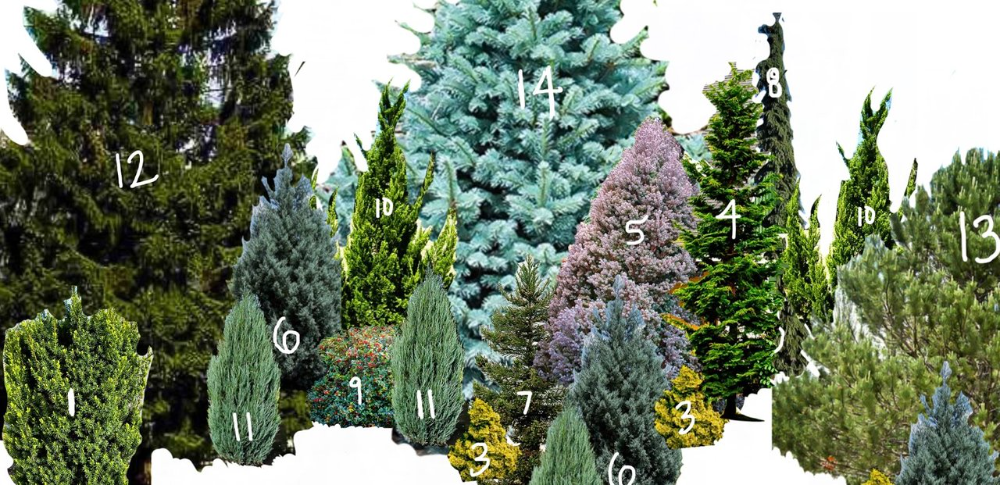 ’
’
With a maximum height of 26 feet, Cotoneaster ‘Cornubia’ is fairly slow-growing, so won’t dominate your yard – making it one of the best trees for front yards. It likes full sun and well-drained soil, but prefers a milder climate, thriving in USDA zones 6-9.
3. Birch (Betula)
(Image credit: Anna Stowe Botanica / Alamy )
‘Birch trees have beautiful bark that’s particularly noticeable in winter,’ says gardening expert Matt James. ‘Chalk-white paper birch (Betula papyrifera) and Betula ‘Doorenbos’ are popular but big, so site them carefully – both look great as single specimens in large yards. For small yards, choose dome-shaped Betula ‘Youngii’ which grows no bigger than 26ft tall.’
If you have the space, you can group together various types of birch trees with different-colored bark.
‘While birches are some of the best trees with white bark, not all birch bark is white. The Chinese red birch is orangey red, Betula ‘Parkwood’ is dark purple with little white bands and Betula 'Mount Zao' has dark purple and orange, peeling bark,’ adds Matt.
You can grow birch trees in USDA zones 2-9, depending on the variety, in full sun or partial shade.
4. Flowering dogwood (Cornus florida)
(Image credit: Getty Images)
A smaller tree with a rounded growth habit, flowering dogwood is one of the best trees for privacy and screening in a compact yard, and can be planted as close as 10 feet away from the house.
‘Flowering dogwood is an excellent landscape choice for all four seasons. Showy white bracts appear in spring, foliage turns a vibrant red purple in fall, and glossy red fruits attract winter songbirds to the enjoyment of all,’ says Dan Lambe.
'This tree offers nice contrast when planted along with pink or red dogwoods with larger evergreens in the background.’
Growing up to 25 feet, flowering dogwood can be grown in USDA zones 5-9. Plant in moist but well-drained soil in full sun or partial shade.
5. Eastern White Pine (Pinus strobus)
(Image credit: Getty Images)
If you’re looking to establish privacy quickly, then look at the best fast-growing trees such as the Eastern white pine.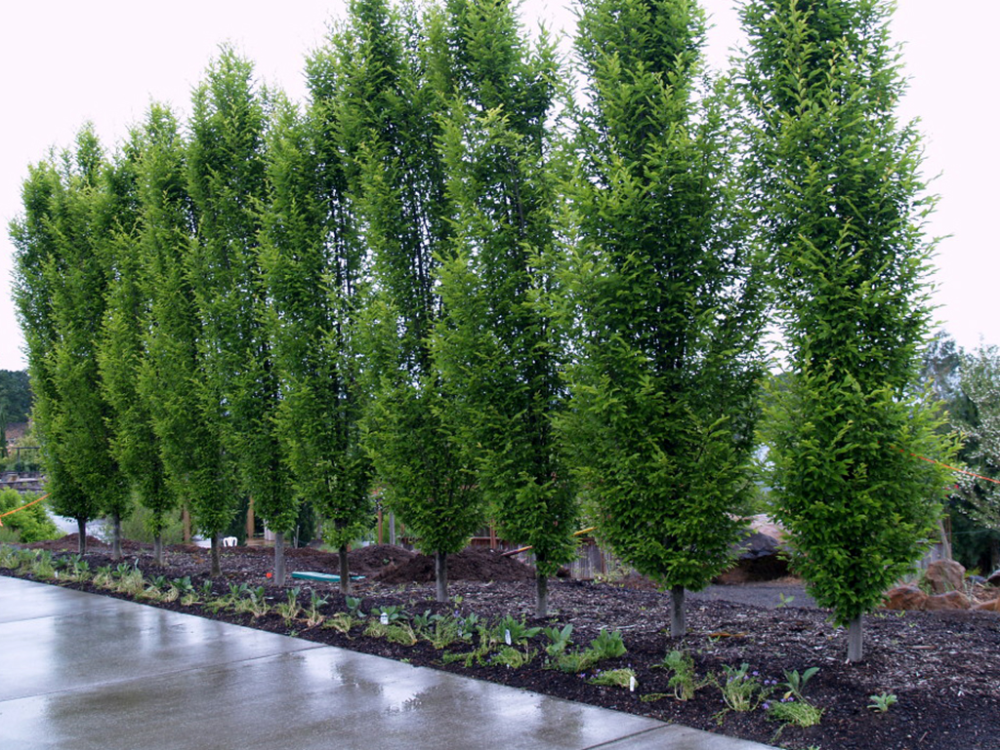
It increases in height by up to 24 inches per year until reaching a maximum height of 50-80 feet and a spread of 20-40 feet at maturity.
'This hardy, valuable evergreen is striking in the winter landscape, where it makes an ideal wind-break,’ says Dan.
The Eastern white pine thrives in acidic, moist but well-draining soil, in full sun or partial shade. It's a great option for USDA zones 3-8.
6. English yew, or common yew (Taxus baccata)
(Image credit: Future / Rowan Isaac)
The English yew – also known as the common yew – 'is probably the classic evergreen tree. It is elegant and long-lived, and rejuvenates itself remarkably well if pruned in the early spring,' explain the experts at Practicality Brown .
One of the best trees for privacy, and planting en masse to create hedging, Taxus baccata can grow to about 40 feet (12 meters) tall. It thrives in free-draining soil and can tolerate sun to shade. Some varieties also produce small red berries – loved by wildlife as a food source.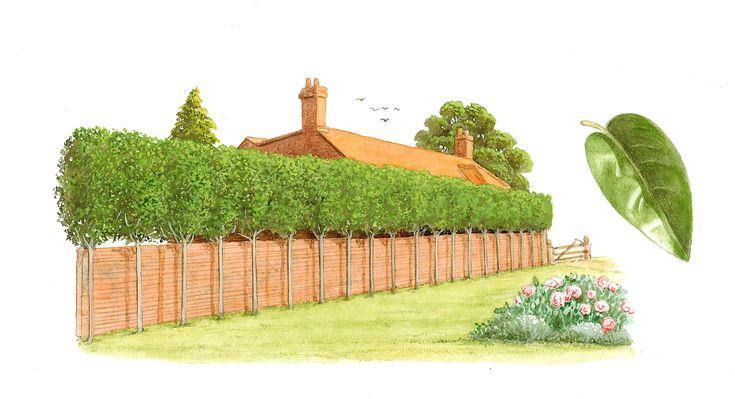
Grow it in USDA zones 5-7.
7. Italian cypress (Cupressus sempervirens)
(Image credit: Getty Images)
One of the best trees for screening tall buildings at the back of your backyard – and for adding a marvellous Mediterranean garden feel to your backyard – is the hardy Italian cypress.
These tall, slender beauties can add dramatic height to a boundary, driveway or path and, with their dense foliage, are among the best trees for screening if your garden is overlooked by the neighbors.
Very easy to grow, they just need the occasional clipping to keep them in good shape and can shoot up to three feet each year, reaching a maximum height of up to 70 feet (20 meters).
Grow it in zones 7-9.
8. Bamboo (phyllostachys or fargesia)
(Image credit: Future / Claire Lloyd Davies)
Although technically a grass, the larger, woody varieties of evergreen bamboo are more tree-like, and are very effective for screening and privacy.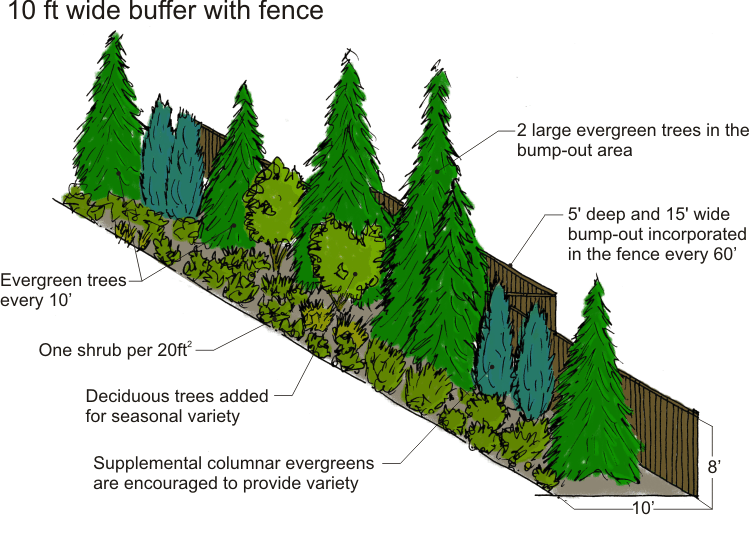
'Bamboo is tough and easy to grow. For space-strapped gardeners, it also answers the need for tall but thin, which very few other plants can offer without the need for regular trimming,' explains gardening expert Leigh Clapp.
Providing movement and an oriental feel to your garden, bamboo is fast growing and hardy. 'Choose clump-forming varieties like Fargesia robusta, not one that sends out invasive runners,' Leigh adds.
9. Cherry laurel (Prunus laurocerasus)
(Image credit: Getty Images)
A vigorous spreading evergreen with glossy, dark green leaves, cherry laurel is one of the best trees for screening and privacy due to its upright and bushy form.
It also has some added seasonal interest, producing small white flowers in spring, followed by cherry-like red fruits in fall.
Preferring slightly acidic soil, this tree can grow up to 26 feet (8 meters) and likes sun to shade.
'The cherry laurel is also available in pleached form, which is excellent for screening in smaller gardens,' advise the experts at Practicality Brown.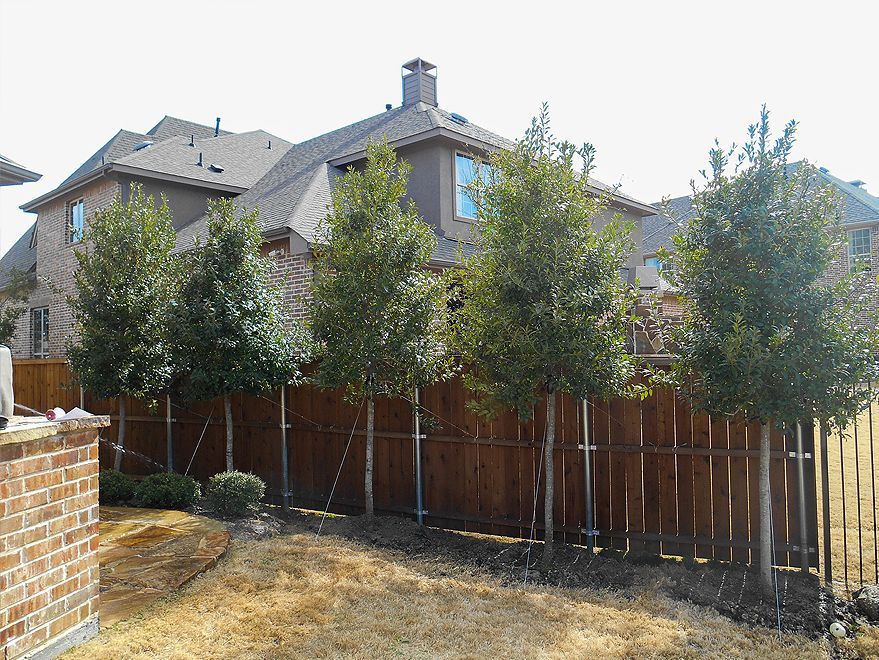
It's suitable for USDA zones 5-9.
10. Holly (Ilex aquifolium)
(Image credit: Getty Images/ Danielle D. Hughson)
With its distinctive prickly leaves, holly is a classic evergreen that makes a good tree for privacy as well as security.
Although it ably keeps intruders out, it welcomes wildlife in, and can provide shelter for many bird visitors to your backyard.
Suitable for free-draining normal, clay or chalk soils, Ilex aquifolium produces red or orange winter berries – making it a favorite choice for use in Christmas foliage arrangements – and an ideal choice when planning a winter garden. These are then replaced with small white flowers in spring.
As well as the common holly with its dark green glossy leaves, there are those with beautiful variegated leaves, such as 'Argentea marginata', with lovely silver edges tinged with pink, or 'Myrtifolia aurea maculataso', that features yellow and green splashes, so you could plant a mixture for contrast and interest.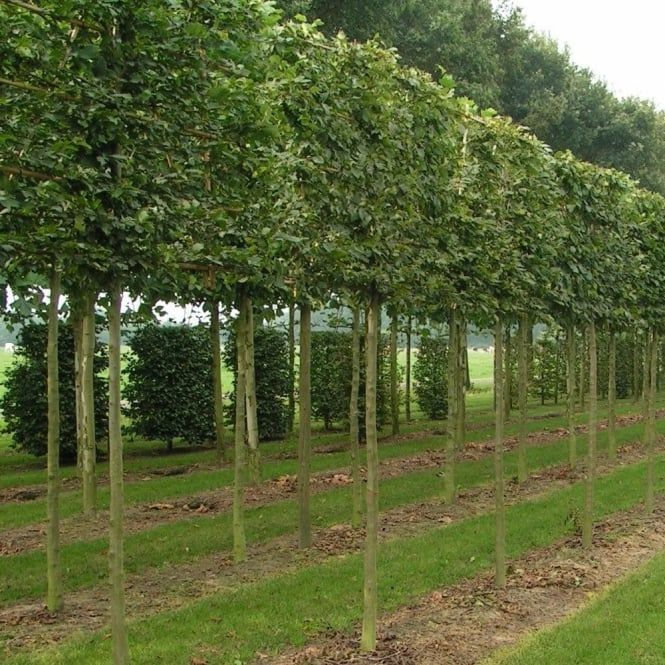
Holly is, however, a slow grower – only a couple of inches per year – so not one for speedy screening potential. Grow it in USDA zones 5-9.
11. Western red cedar (Thuja plicata)
(Image credit: Getty Images/ Adél Békefi)
'The evergreen conifer Western red cedar is densely branched, making it a great tree for screening,' say the experts at Practicality Brown.
It's dark, olive green leaves can turn bronze in winter and the foliage has a pleasant, fruity aroma if crushed.
They make popular alternatives to leylandii as best trees for privacy, although have a slightly slower growth rate. They can also afford protection from noise and wind, so make a good choice for screening trees along a garden boundary beside a road.
Western red cedar will grow in USDA zones 5-9.
12. Hornbeam (Carpinus betulus)
(Image credit: Getty Images/ Clive Nichols)
Hornbeam is a popular deciduous tree for screening, with fresh green leaves in spring that turn golden yellow in fall.
'Hornbeam also keeps a proportion of its old leaves on its branches through to the spring, dependent on how exposed to the wind it is, giving a better screening effect,' advise the experts at hedgeplants.com .
This hardy specimen can be planted in sun or shade and is tolerant of most soil types in zones 3-9.
13. Red robin (Photinia x fraseri 'red robin')
(Image credit: Getty Images / Jacky Parker)
This stunning evergreen boasts red, glossy leaves in the spring and summer, before maturing to lush dark green foliage in fall – perfect for both privacy and screen, but color, too.
It can reach a height of 13 feet (4 meters) and a similar spread, but can be easily kept pruned to a smaller size.
Fully hardy, red robin prefers sun, but can do just as well in shade, and if left unpruned will produce masses of white flowers in summer. Grow it in zones 7-9.
14. Holm oak (Quercus ilex)
(Image credit: Getty Images/ La Bicicleta Vermella)
'For evergreen screening or year-round interest, holm oak is a wonderful choice,' say the experts at Ornamental Trees
With its leathery, serrated holly-like leaves, it is also known as the holly oak and is as equally hardy and robust.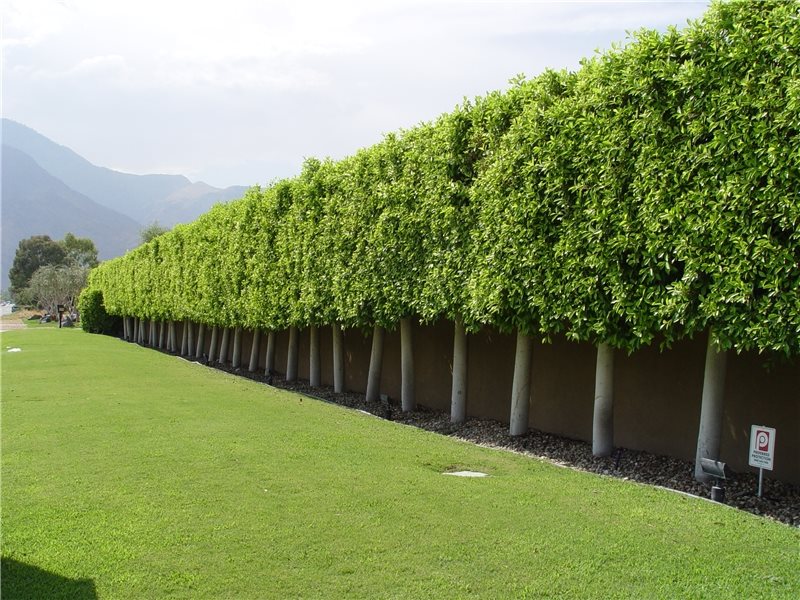
It will withstand exposed positions and as it is also tolerant of salt-spray, 'so it is ideal for using as an evergreen windbreak in coastal gardens,' they add.
Grow holm in oak in USDA zones 7-10.
15. Colorado blue spruce trees (Picea pungens)
(Image credit: Getty Images)
With blue, pine needle-like foliage that becomes densely packed in a pyramid shape, the Colorado blue spruce trees provide year round interest and are particularly suited to small gardens, eventually growing to about 8 feet.
'It is a very hardy small tree that will grow in most soils, excluding dry soils; it is also best to avoid full exposure,' say the experts at Ornamental Trees.
This is a slow grower, but could be included in a mix with other faster growing evergreens, and makes an excellent foil for other plants.
Grow Colorado blue spruce in USDA zones 3-7.
What tree provides the best privacy?
The type of trees that make a good privacy screen are those that are easy to grow, hardy and will tolerate most soils and conditions.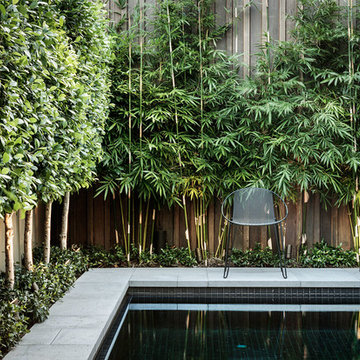
You do not want to choose trees that are high maintenance, but rather those that are self-sufficient for much of the year, maybe just requiring the occasional prune to keep them in shape.
As you will seek privacy year round, choose a good variety of evergreen that will not drop their leaves, with dense foliage, and which will thrive when planted close together. You can, however, intersperse these with a few deciduous specimens for seasonal interest and color.
The best trees for privacy and screening need to grow to at least 8 feet, and there are many options that will grow much taller.
What is the fastest growing tree for privacy?
'Some tree species grow much faster than others, which is great if you’re looking for a quick privacy screen. However, slow-growing species typically live longer than those with a faster growth habit,' says Dan Lambe.
'Local growing conditions dramatically affect growth, so more often than not rates are described in relative terms as fast, medium, or slow. Check with your local arborist or nursery professional for expected performance in your region.'
Check with your local arborist or nursery professional for expected performance in your region.'
Dan recommends the following trees as being among the fastest growing trees for privacy: paper birch, pin oak, Eastern white pine, October Glory red maple, and quaking aspen.
Which trees can be planted close to houses?
Many trees can be planted close to houses and this does not cause a problem, but it is difficult to predict which trees will or won't cause issues.
There are a number of factors that could contribute to a tree causing damage to a building or surrounding structures. These include whether the garden has heavy clay soil – as there is an increased risk from trees drying out the soil in periods of drought, causing the soil to shrink and cause structural damage to a property.
Also some trees have a higher water uptake than others. Those with a low water demand include picea and pinus, whereas trees with a high water intake include cupressus and quercus.:no_upscale()/cdn.vox-cdn.com/uploads/chorus_asset/file/19505068/03_leyland_cypress.jpg)
Do your research beforehand and, if in doubt, consult an expert.
Rachel is senior content editor, and writes and commissions gardening content for homesandgardens.com, Homes & Gardens magazine, and its sister titles Period Living Magazine and Country Homes & Interiors. She has written for lifestyle magazines for many years, with a particular focus on gardening, historic houses and arts and crafts, but started out her journalism career in BBC radio, where she enjoyed reporting on and writing programme scripts for all manner of stories. Rachel then moved into regional lifestyle magazines, where the topics she wrote about, and people she interviewed, were as varied and eclectic as they were on radio. Always harboring a passion for homes and gardens, she jumped at the opportunity to work on The English Home and The English Garden magazines for a number of years, before joining the Period Living team, then the wider Homes & Gardens team, specializing in gardens.
What you need to know about hedges: types, planting, care
Contents
- Types of hedges
- How to choose hedge plants
- Best hedge plants
- How to plant plants?
- How to maintain a hedge
Hedge - an elevation of living plants with a dense decorative crown.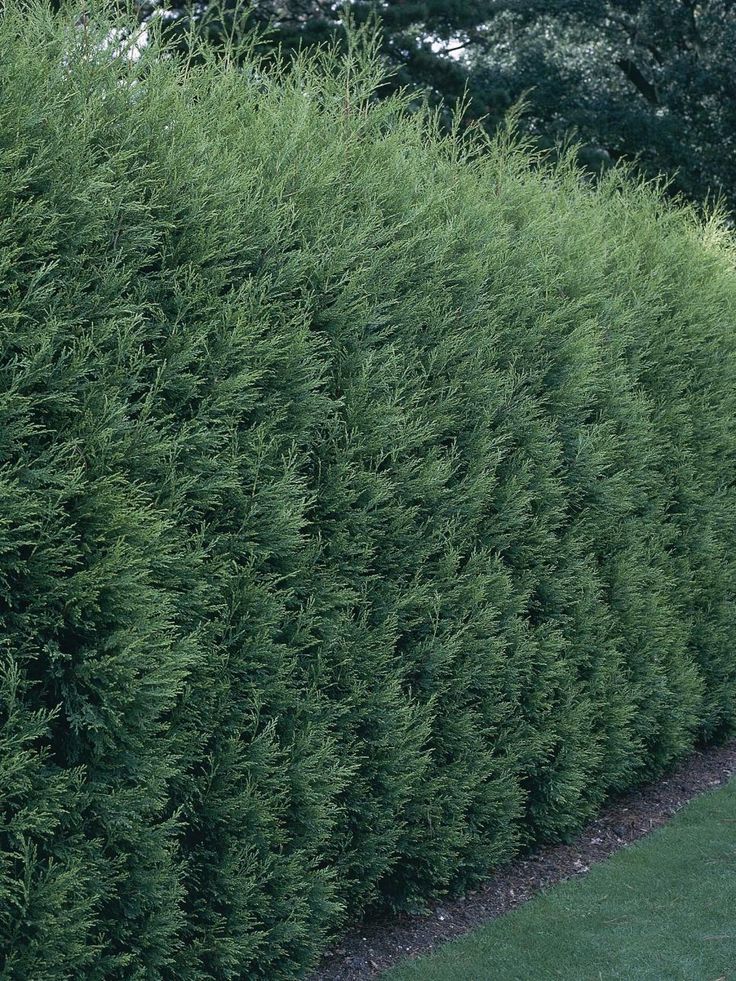 This is an interesting alternative to a conventional fence. A hedge can be both as a decoration on the territory of the site, and a functional element. For example, a high hedge of deciduous trees can create a noise reduction effect, and planting them in two rows 50 meters from a building can reduce the noise level by 20 dB. nine0003
This is an interesting alternative to a conventional fence. A hedge can be both as a decoration on the territory of the site, and a functional element. For example, a high hedge of deciduous trees can create a noise reduction effect, and planting them in two rows 50 meters from a building can reduce the noise level by 20 dB. nine0003
The choice of plants can be from coniferous to deciduous. As a rule, for such a need, obstacles with sharp leaves or thorns are selected. Tall trees can protect you from large wind currents and create a natural shadow around the perimeter on the site.
It is very important to remember about the timely decorative pruning of the crown. Otherwise, ornamental shrubs will lose their elegant appearance, and trees can harm those nearby.
Types of hedges
1. Zoning
Separate different areas of your space with a fence. Usually a fence of trees is placed so that it is behind those who are seated. This creates a sense of security. You can make a railing in a number of ways:
You can make a railing in a number of ways:
- Tall evergreen trees will help create openwork transitions. This can be achieved using climbing plants.
- Plant small low or medium height curbs.
Usually such a green fence is placed above the backrest inside standing furniture. Otherwise, it will not be possible to achieve the desired comfort, privacy. nine0003
It is not necessary to make a fence around the perimeter, leaving only a place for passage. You can make one living wall, and in front of it, for example, put a gazebo, inside which there will be a table with seats.
2. Interesting shapes
The decorativeness of selected plants will help create interesting shapes. For example, you can build a composition not only of animal figures, but also of fences of flower beds, alleys.
3. Stacked
Spiraea can be planted at the “feet” of thuja or photinia, and Victoria or any flowers can be made at the foot of the retaining wall.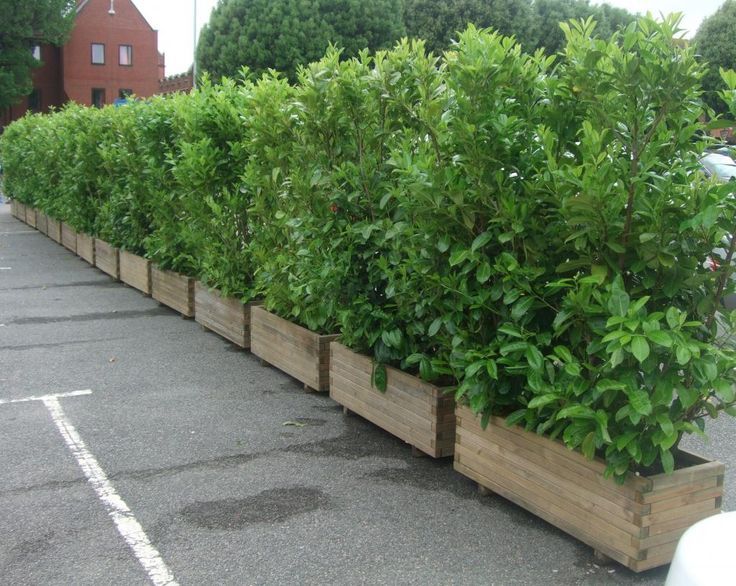 This combination will create a beautiful ensemble of conifers, stone and flowering.
This combination will create a beautiful ensemble of conifers, stone and flowering.
4. Corner
If you place shrubs in the corners of the fence, you can arouse the interest of passing by and guests. It doesn't have to be a fence around your entire yard. Sometimes it can be a type of zoning, where soft chairs or chairs are located inside the hearth. nine0003
5. Decoration of walls, fences
Combination of decorated trees in the form of a fence or a fence would be a great option. For example, it may be a fence, in front of which a hedge is built a little lower in height. Suitable for those who want a fence around the perimeter of the site.
How to choose hedge plants
Before choosing a plant, you need to determine the purpose of the hedge and priorities. Immediately calculate whether you can provide this beauty with proper care. Have you chosen a place for her? How much are you willing to spend on planting and care? nine0019 What kind of hedge plants do you want?
To decorate the interior space of the plot, it is better to choose ornamental dwarf perennials. Take a closer look at deciduous or coniferous shrubs.
Take a closer look at deciduous or coniferous shrubs.
If you want to give preference to trees, remember their growth process. After all, when planting seedlings close to each other, over time they will not have enough space. In this case, you will have to spend energy on the transplant again. Therefore, it is better to leave enough space in advance for the growth of trees. nine0003
Deciduous often sold with bare roots. Therefore, they should be transplanted only in late autumn or early spring. So the plant quickly adapts to the new environment.
The choice of hedge plants is huge. You can pick up the ones you like on our website, and soon they will delight you on the site.
The best plants for hedges
Many gardeners, when they want to create beauty on the site, ask themselves: what is better to use for their purposes? We will tell you which groups are compatible with each other. nine0003
- Hardwood. The main difference from evergreens is that deciduous ones are decorative as long as they have foliage.
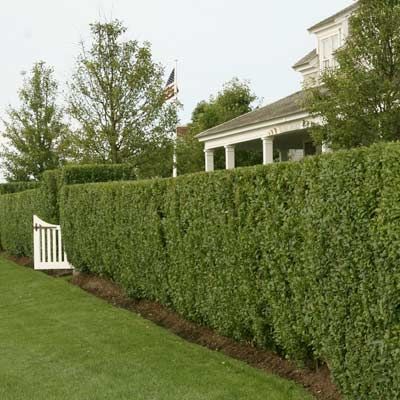 In some cases, plants bear fruit. The most popular: cotoneaster, spirea, barberry, almond, lilac, derain, mountain ash, etc.
In some cases, plants bear fruit. The most popular: cotoneaster, spirea, barberry, almond, lilac, derain, mountain ash, etc. - Coniferous blends well with other species. They can be used to create tiers or to close a wooden fence "alive". The most popular here is thuja. It can be used for various purposes and in any form. You can learn more about the planting and care of the thuja columna by clicking on the link. Also well suited yew, and virginian juniper. nine0008
- Fruit. If fruits also grow on your hedge, then this will be a very good bonus for lovers of various berries. Suitable for those who do not have enough space on the site for planting the most delicious fruit bushes. In this case, well suited: barberry, viburnum, currant, blueberry.
How to plant plants?
Have you decided what will become part of your garden? Have you already chosen a place to land? Then get ready to read exactly how to plant a plant so that it takes root and pleases the eye.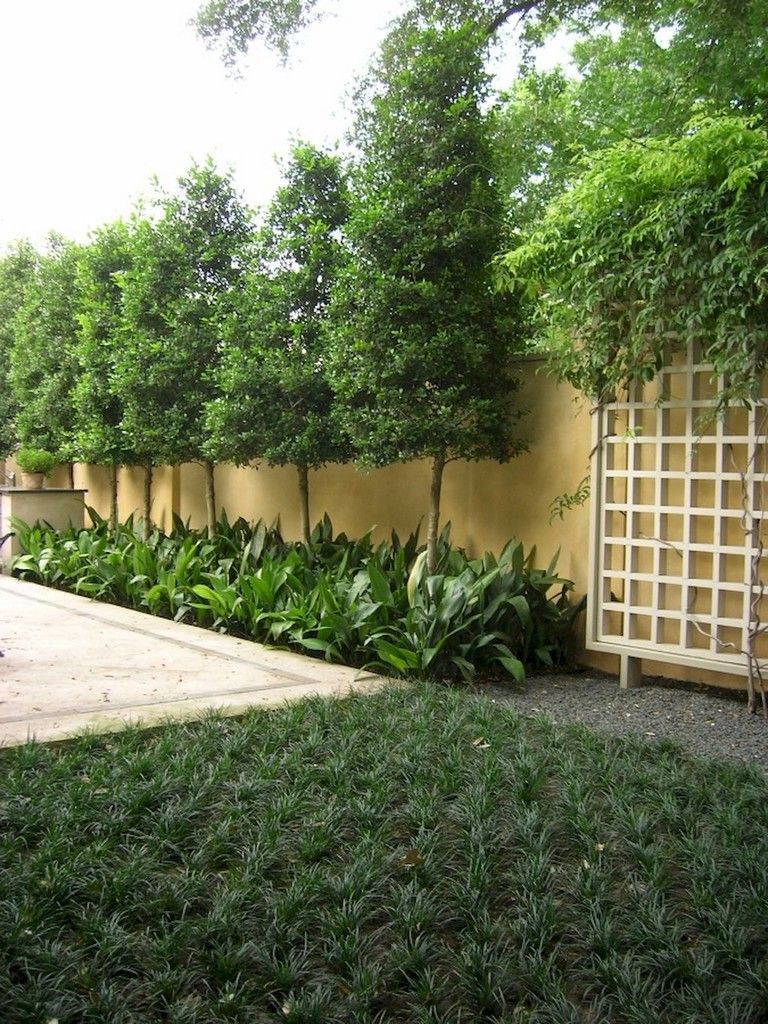 nine0003
nine0003
The first thing to do is to mark the landing area. Before planting a seedling, pay attention to what its size will be in the future. Leave enough room for each seedling to grow. It is important that they do not come into contact with each other in the future.
Trees can be planted in one or two rows. Planting density will depend on plant species.
Planting distance is better to choose from 20 to 50 centimeters, and between rows from 30 to 80 centimeters. In the direction you dig one or two trenches, and then place the seedlings in accordance with the planting type of plant. Then cover the roots with earth and lightly tamp the earth. nine0003
Be sure to water the planted plants thoroughly.
How to maintain a hedge
After planting, it is better to mulch the soil. So you can keep it moist and reduce the number of grown weeds. In the first years of the life of seedlings, special attention should be paid to abundant watering. This is especially worth doing during the dry season.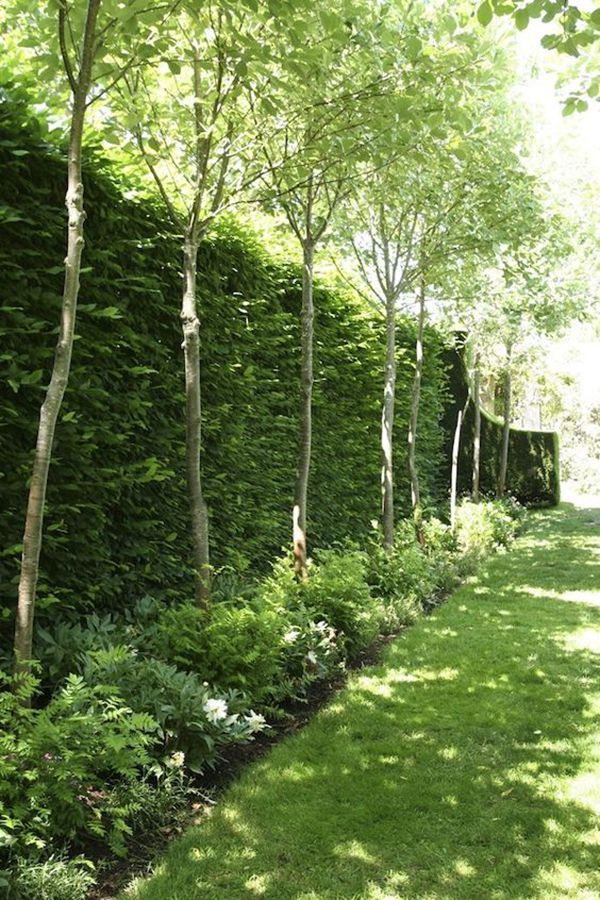
An automatic watering system can be provided during the planting phase. It will make your work easier, as it will be able to independently control the amount of moisture and watering mode. The increased density of the crown stimulates the active evaporation of moisture. If the "living fence" is adjacent to the road, you should definitely use sprinkling. To avoid burns and other problems, it is worth sprinkling in the morning and evening hours. At this time, the sun in the summer can no longer harm the beauty of the living wall. nine0003
Do not forget about hygiene procedures. For example, it is extremely important to trim the crown and clean the trees of old dried branches.
Summary
For many reasons, a hedge will improve your yard. Tall evergreen crops will protect the site from thieves. Fruit will delight the eye all season. Do not forget about individual care for seedlings. The soil is also important. By choosing the right soil for specific seedlings, you increase their lifespan. nine0003
nine0003
Two villas, two characters — Voyage magazine
Ultima Cannes Le Grand Jardin is the best choice for lovers of aristocratic solitude and peace. This is the only private villa of its kind on the island of Sainte-Marguerite, where representatives of the world aristocracy and royal families used to live, among which were the families of Louis XIV and the Dukes de Guise. Rumor has it that the Man in the Iron Mask, who was rumored to be the brother of Louis XIV, was once a prisoner in the fortress of Sainte-Marguerite. nine0003
The unique Ultima Cannes Le Grand Jardin is located right in the middle of a 14,000 square meter botanical garden. Once at the villa, you will enjoy the bewitching beauty of
local nature: cypresses, palm trees, flowers, olive and fruit trees growing here perfectly complement this idyllic French landscape. The best walk is a leisurely step through a flowering garden along sweet-smelling citrus trees, roses, geranium bushes and irises.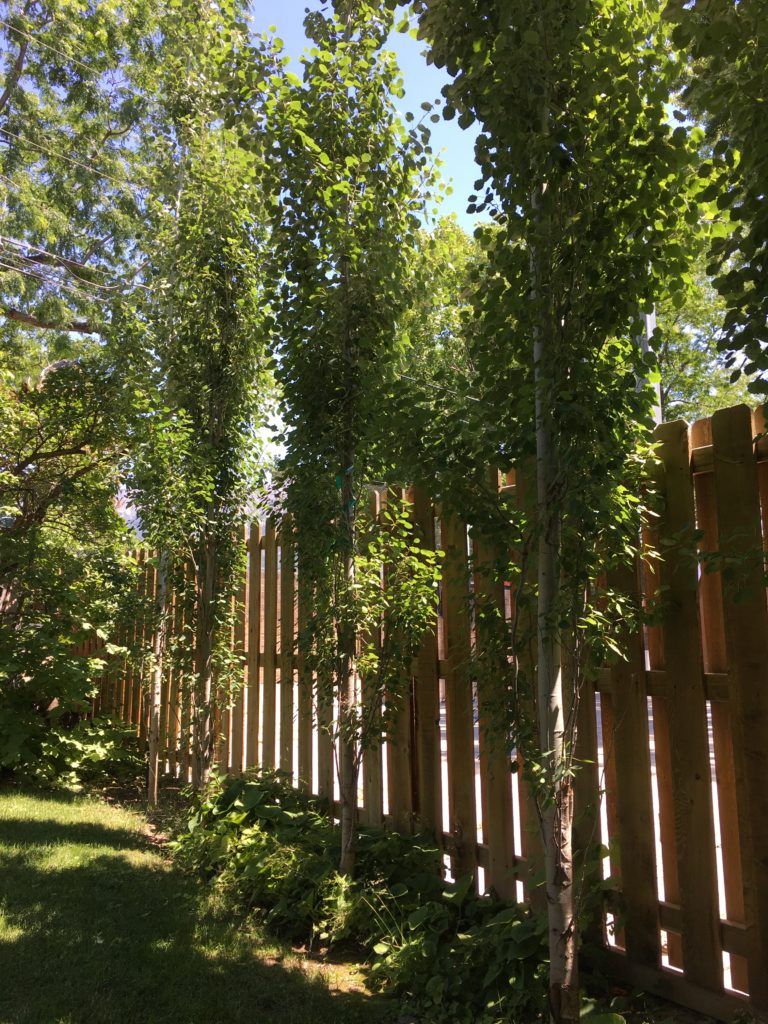 On the territory of the villa you can also see calm and crystal clear natural pools. nine0003
On the territory of the villa you can also see calm and crystal clear natural pools. nine0003
Private villa surrounded by an old stone fortress and completely hidden from prying eyes. And this despite the fact that it is located just a few kilometers from the legendary bustling Cannes.
Ultima Cannes Le Grand Jardin is without a doubt one of the most "closed" villas in the south of France, which can be reached by private helicopter or boat. At Ultima Cannes, Le Grand Jardin is a safe haven from the bustling city. It is a special pleasure to dine al fresco in the villa's restaurant. After all, this is where dishes from organic farm products are served. nine0003
Ultima Cannes has its own vegetable garden and orchard surrounded by olive and lemon trees that protect the harvest from the scorching Mediterranean sun. In this place, everything is created so that guests of the villa can enjoy breakfast, lunch and dinner every day from the freshest and most delicious ingredients for every taste. And the villa's personal chef works tirelessly to bring you a real astronomical delight.
And the villa's personal chef works tirelessly to bring you a real astronomical delight.
More details on this exclusive property will be revealed closer to its 2022 launch. nine0003
Harmony is the first thing that comes to mind when thinking about Ultima Corfu, the first Ultima Collection villa on the coast. One could say that it is ideal for a healthy lifestyle, but it is not necessary to be a conscious adherent of a healthy lifestyle from the very beginning, here these “settings” are turned on automatically. In a private three-storey villa, up to 12 guests can freely accommodate.
Villa Ultima Corfu is located right on the beach, so you can swim in the crystal clear waters of the Ionian Sea at any time. From each room, guests of the villa have a magnificent view of the Greek and Albanian coasts. nine0149 In addition, Ultima Corfu is famous for its wellness program: the villa has two heated infinity pools, a spa, an impressive waterfall, a hammam, the walls of which are decorated with mosaic tiles, and there is also a Jacuzzi.